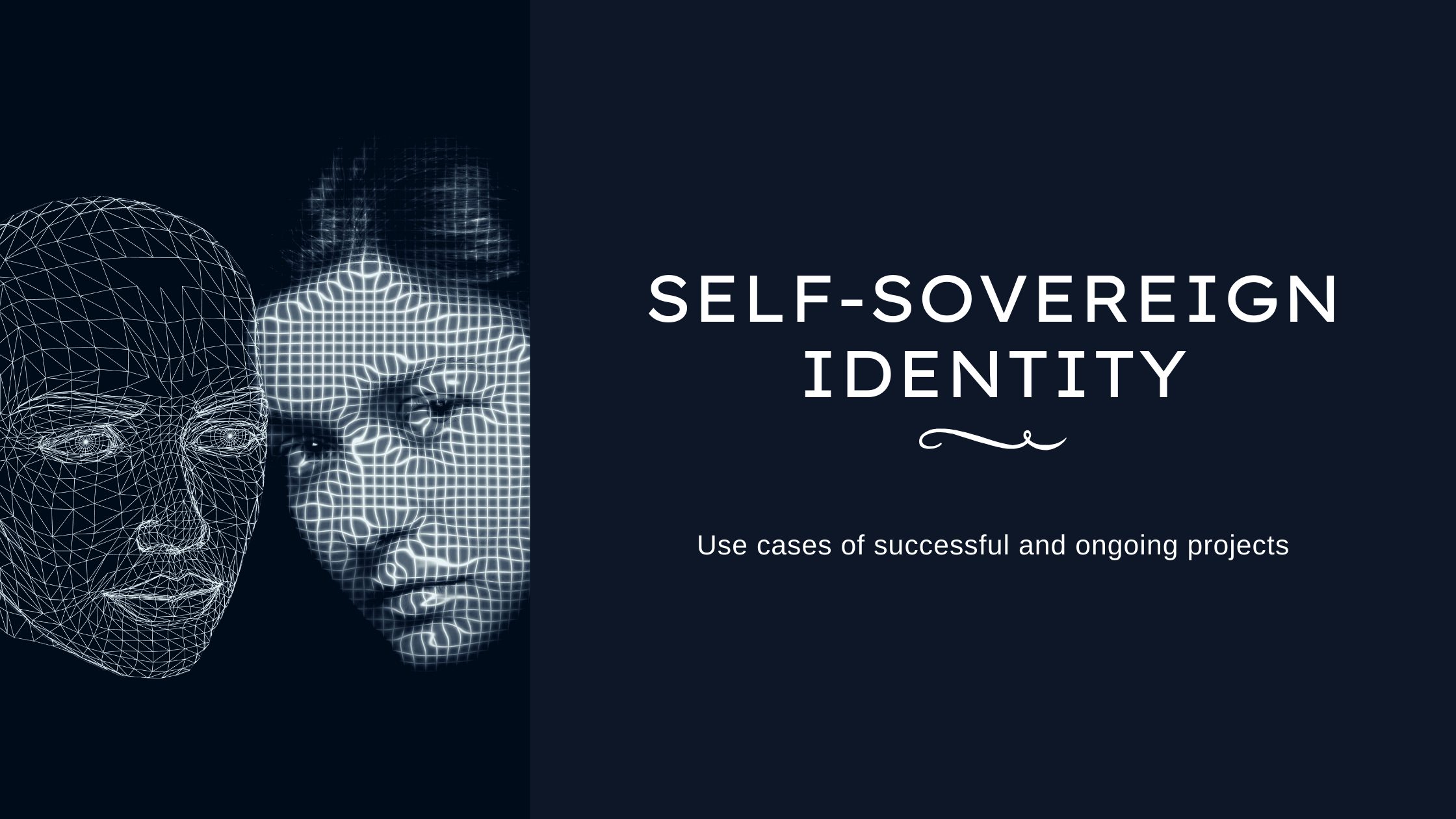When you sign in to any web-based tools, social media service, or texting platforms using Google, Facebook, Twitter, or Microsoft accounts, you use your digital identity. Digital identity has become very popular these days and also vulnerable to unlawful access. Therefore, to provide a tamper-free, cost-effective, and democratic digital identity system, the blockchain technology masterminds came up with blockchain-based Self-Sovereign Identity (SSI). This article will help you understand the underlying concepts of SSI, its technology, use cases, and ongoing projects.
The Concept of Tamper-Free Self-Sovereign Identity (SSI)
Self-Sovereign Identity (SSI) is a blockchain-based digital identity system. It puts the management system of SSI in the hands of the users and not the organizations or the governments. Companies and governments can efficiently utilize the system to verify identity as per different use-case scenarios in a cost-effective way.
Self-Sovereign Identity (SSI) is a tamper-free and democratic system where you can manage your data privacy and deliver consent to a third party if you wish to do so. With democratic SSI technology, you do not depend on the tech giants who maintain your digital identity profile. You can grant or revoke access to your digital profile effortlessly, using digital systems like computers, tablets, mobile phones, or wearables. These decentralized identifiers (DIDs) of SSIs usually available in a decentralized blockchain wallet app.
The Features of SSI
Being an advanced blockchain-based technology, democratic SSI has many features that are beneficial to users and organizations. These features are:
1. The SSI system for profile authentication should be highly cost-effective when available globally to organizations, governments, and end-users.
2. This is a democratic way of protecting user’s and organization’s interests side by side.
3. Self-Sovereign Identity (SSI) utilizes DIDs to establish the identification of individuals, organizations, IoT devices, and other relevant things.
4. There is no central authority for user data protection on any network. As the system is decentralized, users and organizations enjoy such benefits.
5. Being a cryptographic networking system on blockchains, like Ethereum blockchain, data is highly secured and tamper-free.
6. SSI users utilize verifiable credentials transactions that fortify and enhance their relationships with the government or the organization.
7. The value proposition behind SSI is autonomy for participants. You do not need to depend on the big IT giants who dictate their own rules and policies. Every SSI user interacts with each other as peers.
8. Furthermore, organizations and governments can build SSI systems where the owner can control the user autonomy depending on the purpose of the relationship.
Technology that Makes SSI Cost-Effective and Democratic
The fundamental technology of SSI is blockchain and other distributed ledger technologies like Ethereum blockchain. The creation of Decentralized Identifiers takes place in a censorship-resistant environment. Blockchain is the trust that handles effortless transactions of revocation registries or DID publications for the verification process. Experts often generalize the SSI technology as Verifiable Data Registry as the SSI system does not always need a blockchain network.
A. Decentralized Identifier
The tamper-free Self-Sovereign Identity (SSI) system mainly revolves around the Decentralized Identifier (DID) standard. A DID represents a unique identity. Further, there is a link to a DID document that houses data related to the authorized public keys and service endpoints. These modules are crucial to establishing a verified relationship.
The DID methodology will describe how specific blockchains produce DIDs. There are as many as 100 registered DID methods globally. The notable ones are W3C, Hyperledger Indy, Bitcoin, and Ethereum.
Figure 1: An illustration of DID as per the W3C DID method
B. Verifiable Credentials
To attest specific information to a certain DID, Verifiable Credentials come into play as another standard in the cost-effective SSI ecosystem. The digital government ID like driving license or food stamps that you own is a good example of Verifiable Credentials.
In the SSI ecosystem, a government agency will issue digital ID profiles for its citizens. That ID will store data like name, age, SSN, birthdate, etc. Now, if any of the citizens with existing SSI approaches a bank to open an account, the bank can effortlessly verify data through DID exchange.
The user will however need to store its SSI data in a digital device like a smartphone or laptop in the form of an app. The user will have complete control over ID verification, and only with user consent, the verifier can access encrypted data. No one from the bank would know any personally identifiable information (PII) regarding the customer.
When the customer shares democratic SSI data through a mobile app, the bank can go on with further verification, which is totally digital. If everything checks out fine, the user gets a new bank account, without any time-wasting paper trails.
Figure 2: An illustration of three major roles and other processes of the SSI ecosystem
Etereum Standards for Self-Sovereign Identity
There are multiple Ethereum standards when a cost-effective SSI ecosystem is standing on the Ethereum blockchain. Some of these protocols or standards are:
1. ERC Lightweight Identity: This ERC specifies the contract EthereumDIDRegistry. The registry is one-time deployable, and everyone in the network can utilize it as a common resource.
2. EIP-780 Ethereum Claims Registry: It is an interface for adding, getting, and removing identity issuing claims. An issuer issues the claims to a user with a bytes32 type key.
3. EIP712: An Ethereum standard for hashing. It also takes care of signing of typed structured data in contrast with bytestrings.
4. ERC-1484: It is the Ethereum protocol for aggregating digital identity data.
5. EIP-1078: It is the method to facilitate password-free logins to Ethereum native schemes.
6. ERC-725: It defines the standard protocols for a unique recognizable proxy account. Humans, organizations, groups, machines, and objects will use such accounts.
SSI Use Cases—Successful Projects
Cost-effective and tamper-free Self-Sovereign Identity (SSI) has been in use for a few years on an experimental basis. But, in the years 2020 and 2021, multiple commercial Self-Sovereign Identity (SSI) has started their journey. Such projects are the starting point of democratic autonomization of public identity from organizational platforms. Some of the notable projects are:
1. Lumedic Exchange: It is the first network created completely for the patient-centric transfer of healthcare data through SSI-based identity verifiable credentials.
2. IATA Travel Pass: The International Air Transport Association (IATA) is responsible for careful scrutiny of passengers to ensure COVID-19 contagion restriction. IATA Travel Pass is a tamper-free SSI-based verifiable credential that will efficiently identify the vaccination and test status of air travelers across the world.
3. Farmer Connect: The company holds the vision of “Humanize consumption through technology” that will enable and permit separate coffee farmers to effortlessly work with worldwide enterprises. Such technology should minimize costs for big businesses to work in close contact with remote, small, individual coffee growers.
4. NHS Staff Passport: It’s one of its kind portable digital identity credential for nurses and doctors from the largest public healthcare systems in the world.
5. CULedger MemberPass: The company incorporates SSI to fintech services with Credit Union account holder’s identity validation.
6. SSI4DE: The system subsidized by the German Federal Ministry of Economic Affairs, supports secure digital identities for individuals in Germany. The German Chancellor Angela Merkel announced digital identity as a priority topic in December 2020.
7. GLEIF: The Global Legal Entity Identifier Foundation (GLEIF) of Switzerland is the only worldwide online source that facilitates open, regulated, and high-quality legal entity reference data. The agency is committed to observing the SSI model for the digital identity system for organizations.
SSI Use Cases—Ongoing Projects
Though 2021 has seen many successful implementations of democratic Self-Sovereign Identity (SSI) projects. However, the following big-budget projects are still underway:
1. Implementing regulations and laws at the local, state, provincial, and national phases through cost-effective SSI ecosystems. Such platforms will facilitate efficient citizen services for financial, medical, educational, and social needs.
2. Introduction of government-issued ID like driver licenses as digital credentials. The ID verification system will conform to SSI standards. DID data will stay securely stored in privacy-respecting digital apps on smartphones, wearables, or tablets.
3. There are ongoing projects that the focusing on COVID-19 vaccination certificate verification through digital technology. Blockchain-based tamper-free and cost-effective SSI ecosystem can address the challenge as user amount will range in billions of individuals.
4. Vaccination data management and verification for employees to go back to work from office employment culture. Implementation of SIS on blockchain will mitigate fraudulent vaccination positive status cases.
Self-Sovereign Identity Helps Protect Identity and Privacy
An industry-standard tamper-free Self-Sovereign Identity (SSI) ecosystem is already in place. SSI promises a significant reduction of time wastage, making the technique highly cost-effective for ID verification in a digital environment. Above all, SIS brings hope to the end-user community regarding data privacy through autonomy and democratic authentication. Experts are also working on advanced SSI-related technologies like backup, recovery, and mission-critical private storage of identity data. As soon as such technology infrastructures are in place, Self-Sovereign Identity (SSI) will be the global standard for identity verification.


